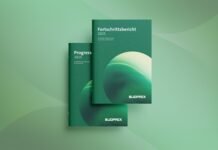
The Circular Economy has set guidelines for flexible packaging for the EPR schemes. Over 180 European companies, associations, and organizations bought together by Ceflex feel that all the extended producer responsibility schemes have a hand in the collecting, sorting, and recycling a product used to its full potential and discarded by the consumer.
The Circular Economy for Flexi packaging (Ceflex) has prepared a checklist for the extended producer responsibility (EPR) schemes to help the suppliers move toward flexible packing. These EPR schemes have a good track record of supporting the circular economy for flexible packaging.
Ceflex states that the criteria for circularity have been introduced when the extended producer responsibility schemes aim to increase the recycling targets along with legal policies of packing waste collection, sorting, and reusing them. The criteria for circularity have been created as a useful and realistic checklist for the EPR schemes since they aim to improve the circularity of packing waste materials.
About the Criteria in EPR schemes
The circular economy for flexible packaging states that the EPR criteria have been pending and should be given priority for commercial uses for flexible plastics. The criteria say that EPR schemes are to be funded to boost the growth of recycled products and renewable markets and promote the circular economy since this will support innovations such as chemical recycling.
As per Ceflex, the criteria form the primary support for the development and discussion in four forms operational, financial, communication, and governance. The operation is related to product sorting, collection, and reuse, while the financial covers the costs linked to the return of the reused materials to the market. Communication and governance take care of expert leadership advice.
The criteria were developed with EPR schemes and the Flexi packing chains with several months of response sessions. As per Graham Houlder, the company’s project coordinator, it has to be captured, recycled, and used in eco-friendly markets that are not dependent on the cost of recycling targets.
Ceflex received funds from UK research and innovation team
The EPR systems designed to create circular materials will help several parts of value chains make necessary changes to go circular. Joachim Quoden of the EPR body further stated that organizations with innovative visions, and good participation in the value chain combined with the EPR raise stake in what is collected, sorted, and recycled for further use.
Flexi packing is an area full of challenges. Hence, they need partners with proper knowledge and creativity, and Ceflex helps in this process. It also gives ideas to EPR in the process of flexible packaging and designing that can assist in flushing environmentally friendly products and use eco-friendly materials to decide the limits for the sorting centers and financial pattern on collection and sorting. The UK research and innovation funded Ceflex to enhance the terms of designing a circular economy with a specific design that impacts sorting and recycling.
According to Mike Jefferson, a consultant at the company, people across Europe had been involved in the development of criteria as this can help EPR schemes look at the latest innovations in the recycling process.











